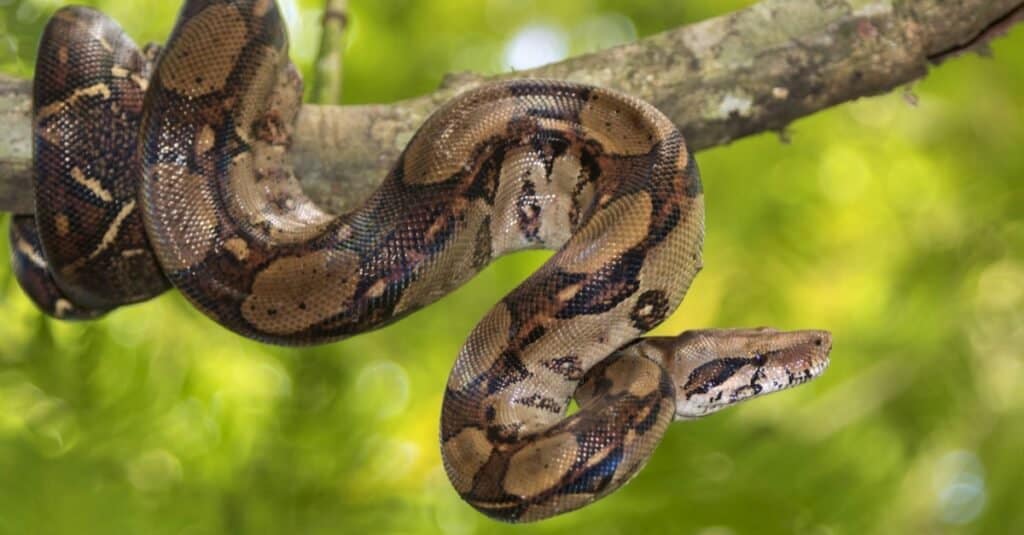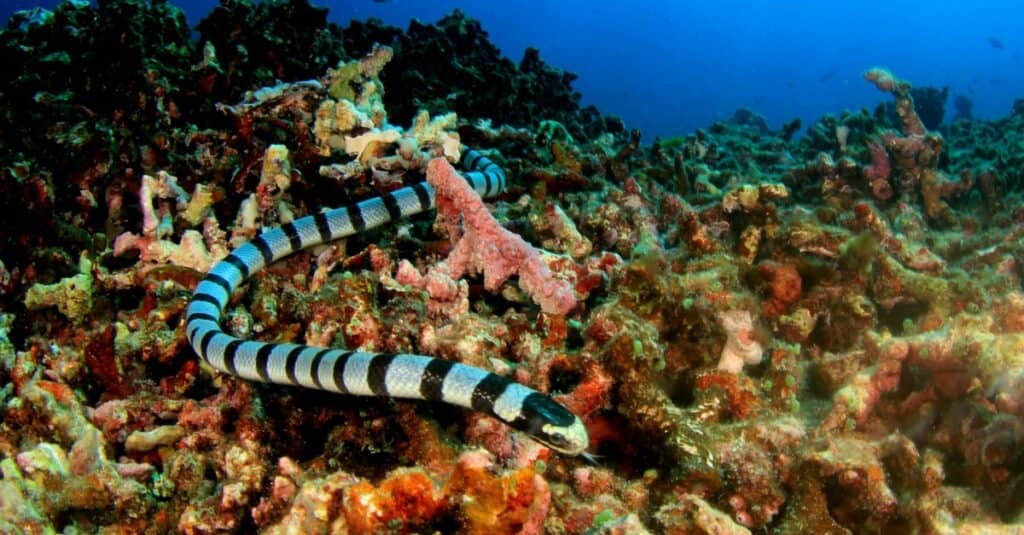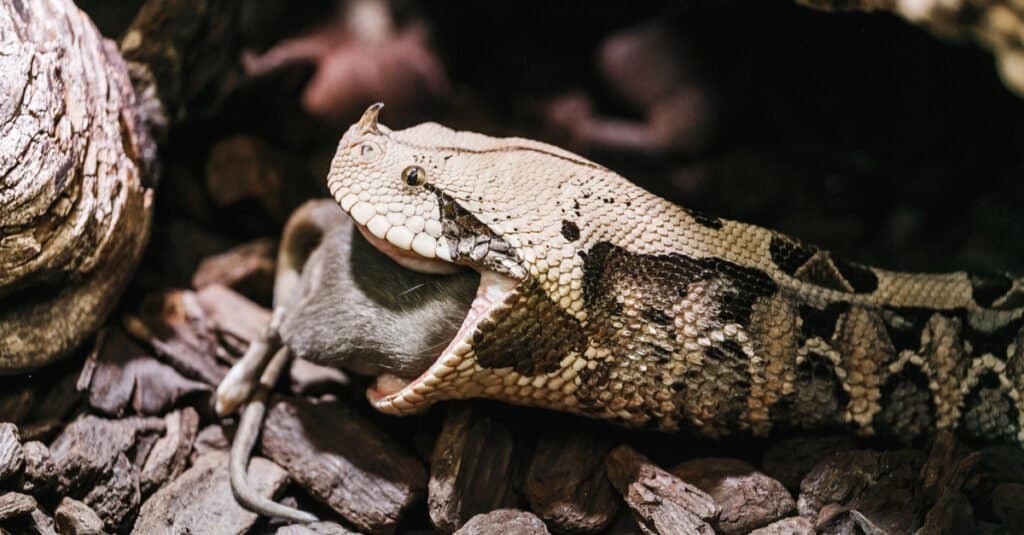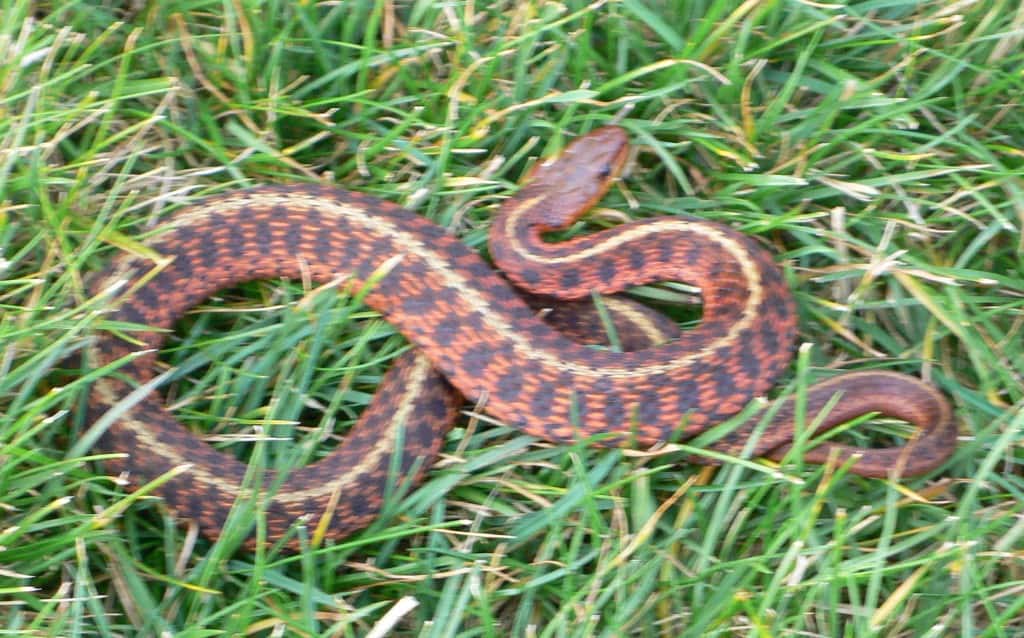Snakes are unique animals with truly bizarre anatomy. In fact, they’re so bizarre that just by looking at them, it’s hard to tell what they are and how we even classify them! Are snakes reptiles, mammals, amphibians, or something else entirely?
Read on as we take a closer look at snakes and how we classify them taxonomically. We’ll also touch on where they live, what they eat, and more interesting facts you probably didn’t know about these stunning serpents.
Are Snakes Reptiles Or Amphibians?

All snakes are classified as reptiles.
©Kurit afshen/Shutterstock.com
Snakes are reptiles! Taxonomically, all snakes fall under the Reptilia class. This is a huge group that includes animals like lizards, turtles, crocodiles, and tuataras. Most reptiles are tetrapods, meaning they have four limbs, but snakes are a bit unique in that they descended from lizards and evolved not to need limbs.
Other traits all reptiles share include:
- The presence of scales (or scutes, in the case of turtles) covering their bodies
- A reliance on their environment to maintain their body temperature, meaning they are ectothermic, or cold-blooded
- An internal skeleton and a backbone, making them vertebrates
- The presence of at least one lung for breathing rather than gills
- Reproduction via egg-laying, though some reptiles can, in a way, give live birth by allowing their eggs to hatch inside their bodies (a trait known as ovoviviparity).
Reptiles are an ancient group of animals that first evolved from amphibians around 300 million years ago! They gradually branched off from their amphibious ancestors and transitioned to living mainly on land. However, many snakes today are excellent swimmers and highly aquatic.
We can classify snakes as members of the Squamata order, a group of reptiles that consists of lizards and snakes. Within that group, snakes belong to the Serpentes suborder. There are almost 4,000 different species of snakes in this group!
Snakes are unique from lizards not only because they lack limbs; they also have more joints in their skulls and highly elastic jaws to allow them to eat very large prey. Because their bodies are so long and thin, their organs are arranged differently from those of lizards. Most snakes have only one working lung. Though they have no legs, many snakes have very small vestigial remains on either side of their vent called pelvic or anal spurs.
How Many Kinds Of Snakes Are There?

There are over 4,000 distinct species of snakes.
©Natalia Kuzmina/Shutterstock.com
The Serpentes suborder currently consists of over 4,000 distinct species of snakes! There are more than 20 different families of snakes and over 500 unique genera within this suborder. These smaller groups exist to help us further classify snakes based on physical traits and behaviors they share.
Like most animals, all snakes have a common name and a Latin taxonomic name that denotes their genus and species. For example, the common garter snake’s taxonomic name is Thamnophis sirtalis. This is because the genus it belongs to is Thamnophis, while its particular species within that genus is referred to as sirtalis.
Snakes vary significantly in size. The shortest and smallest snakes in the world are tiny threadsnakes that only reach around 4 to 5 inches long. Meanwhile, the largest snakes, such as the green anaconda and reticulated python, can grow to lengths exceeding 20 feet and often weigh well over 150 pounds!
Extinct species of snakes were much, much larger! For example, the gargantuan Titanoboa cerrejonensis lived around 60 million years ago and regularly grew 40 to 50 feet long and weighed upwards of 2,000 pounds. That’s bigger than the average school bus!
Where Do Snakes Live?

Some snake species, like the banded sea snake, can stay underwater for hours at a time.
©Rich Carey/Shutterstock.com
Today, snakes occupy every continent aside from Antarctica. That’s bad news for Ophidiophobes but pretty exciting if you’re a snake lover! Although most species thrive best in hot, humid, tropical regions due to their cold-blooded nature, snakes are highly adaptable. They’ve evolved to live comfortably in various habitats, from forests and swamps to deserts and savannas.
Certain species can be terrestrial, meaning they spend most of their lives on land, arboreal, meaning they spend most of their time in trees, or fossorial, meaning they mainly live underground. For instance, flying snakes and vine snakes are arboreal. They have adapted well to living high up in trees in densely wooded forests.
Some snakes, such as sea snakes, have even evolved to spend most of their lives in water. They have wide, paddle-like tails to swim very quickly and efficiently. What’s more, they can hold their breaths underwater for long periods and breathe through their skin!
Are Snakes Carnivores?

Snakes like the Gaboon viper have super-stretchy jaws that allow them to eat very large prey easily.
©frantic00/Shutterstock.com
All snakes are carnivores, meaning they must eat other animals to survive and cannot digest plant matter. In general, they have a prolonged metabolism and digest food slowly, so most of them only need to eat every few weeks or so. However, what specific types of animals a snake eats varies based on its size, species, and where it lives.
For example, smaller snakes like garter snakes and corn snakes primarily feed on small rodents, birds, and their eggs. Larger species, such as the Gaboon viper, can manage to eat larger prey like guineafowl, rabbits, and frogs. The largest snakes in the world, like the reticulated python and the king cobra, are capable of taking down animals like goats, wild boars, and even other snakes!
A snake’s habitat also determines much of its diet. Aquatic snakes like kraits and water moccasins feed primarily on fish and amphibians. Meanwhile, terrestrial and fossorial snakes might eat small, burrowing rodents like mice, moles, and even other reptiles like small lizards. Arboreal snakes that spend most of their time in trees are more likely to feed on birds and their eggs.
Next Up
- Gaboon viper vs. rattlesnake — what are the differences
- Garter snakes in Maryland
- Discover the largest boa constrictor ever caught
Discover the "Monster" Snake 5X Bigger than an Anaconda
Every day A-Z Animals sends out some of the most incredible facts in the world from our free newsletter. Want to discover the 10 most beautiful snakes in the world, a "snake island" where you're never more than 3 feet from danger, or a "monster" snake 5X larger than an anaconda? Then sign up right now and you'll start receiving our daily newsletter absolutely free.
Thank you for reading! Have some feedback for us? Contact the AZ Animals editorial team.








